So…you’re at a store or nursery and you see a plant that is advertised as a bonsai. It’s really just a little stick in a pot (it doesn’t look like that to you at the time, its only after you’ve gone home and searched “bonsai” online does it occur to you that this is what you have) and you buy it, or a dofferent scenario: your great uncle on yo’ mammas side gives you a “gift” (I don’t ever suggest giving bonsai as gifts; its like giving a puppy as a gift. In fact, if I get a call from a prospective customer I will grill them about what their intended purpose in buying a tree is and try to talk them out of a sale if the tree is intended to be a gift.) bonsai. However way you get this tree, you’ve decided to give this bonsai thing a try, so
what do you do now?
Well, there are several things you can do, actually.
If you’re discouraged by all the specimen trees in the images you see on the Internet and you’re wondering how long it will take for your tree to look like them the answer is, probably never…. unless you remove it from the bonsai pot and grow it like a regular plant.
This can be done two ways. Plant it in the ground or put it into a regular nursery container.
I prefer a nursery container myself. The reason is that, although we want growth, we want controlled growth. And in a container there are several ways to control the growth; more water, less water, more fertilizer or less, etc.
The best way to control growth is selective pruning once or twice a year.
The other thing is to leave it in the pot and just enjoy it as is.
Or you can let it die.
Another thing is to take it back to the store and get your money back and use that money towards a tree thats been grown at a bonsai nursery that looks like those Internet-image-search bonsai.
I suggest the first option.
Which brings us to today’s trees.
About 8 years ago I was on my way home from a bonsai nursery and, as was my wont in those days, I went into a Walmart nursery to check out the plants. I didn’t find any really good stock (ilex schillings are usually good there) but I found, on the tropical rack, several ficus salicaria. They were no bigger than pencils. In this size pot

And looking much like this
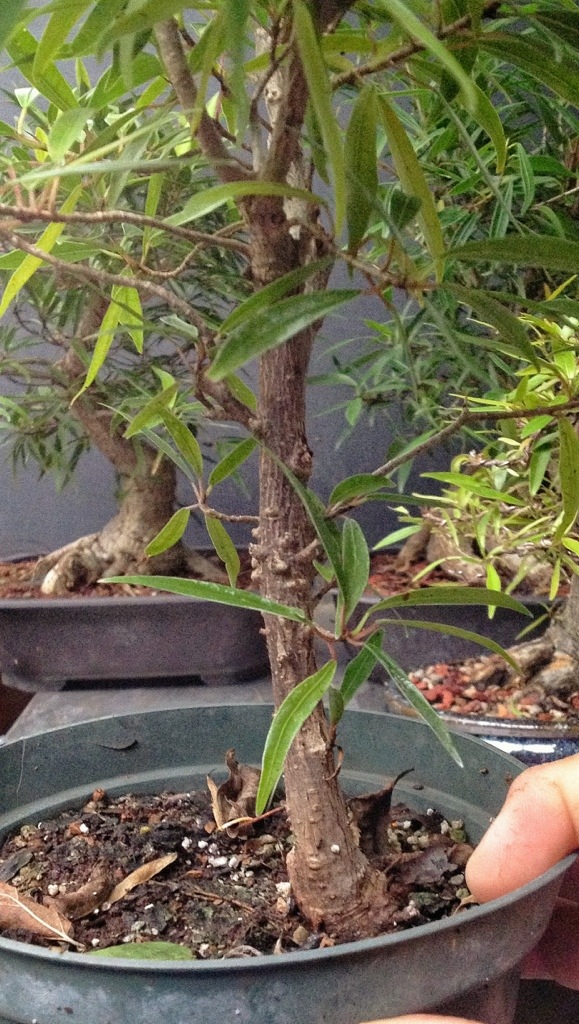
They weren’t being sold as bonsai and they were pretty cheap, I’m thinking a dollar.
I knew that they were ficus and they would grow fast so I got them all.
If you remember this post, I told this story and showed you where some of the pruning cuts were.
I’ll show you some of the other trees now
The one that developed the quickest was this one
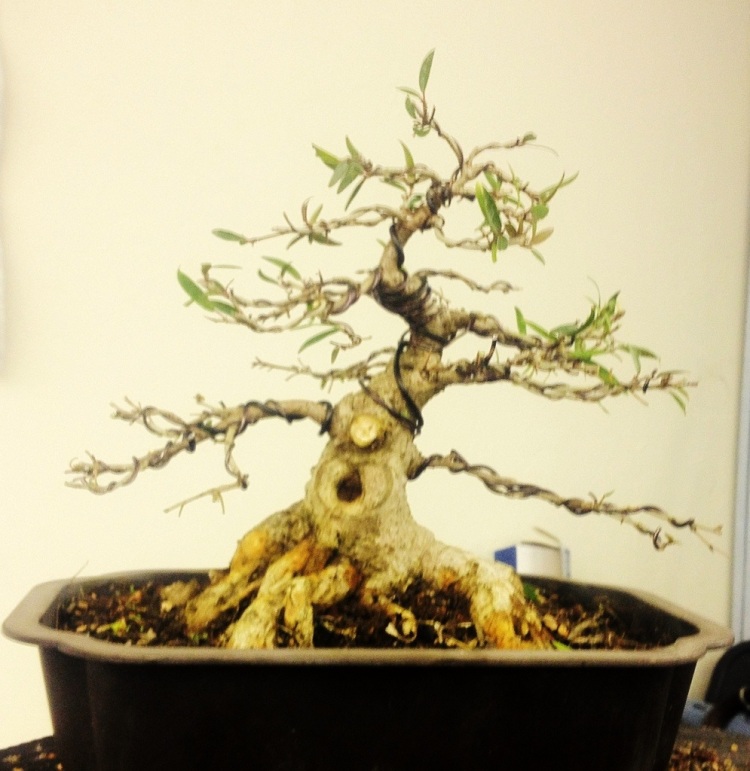
It was sold to the Kawa Bonsai Society and used in a demo performed by Mike Rogers at their annual Joy of Bonsai show.
It was auctioned off in a dramatic back and forth struggle for $390 ( I sold the tree to the club for $75).
Not bad.
You can grow them. It just takes time.
Next we have this tree
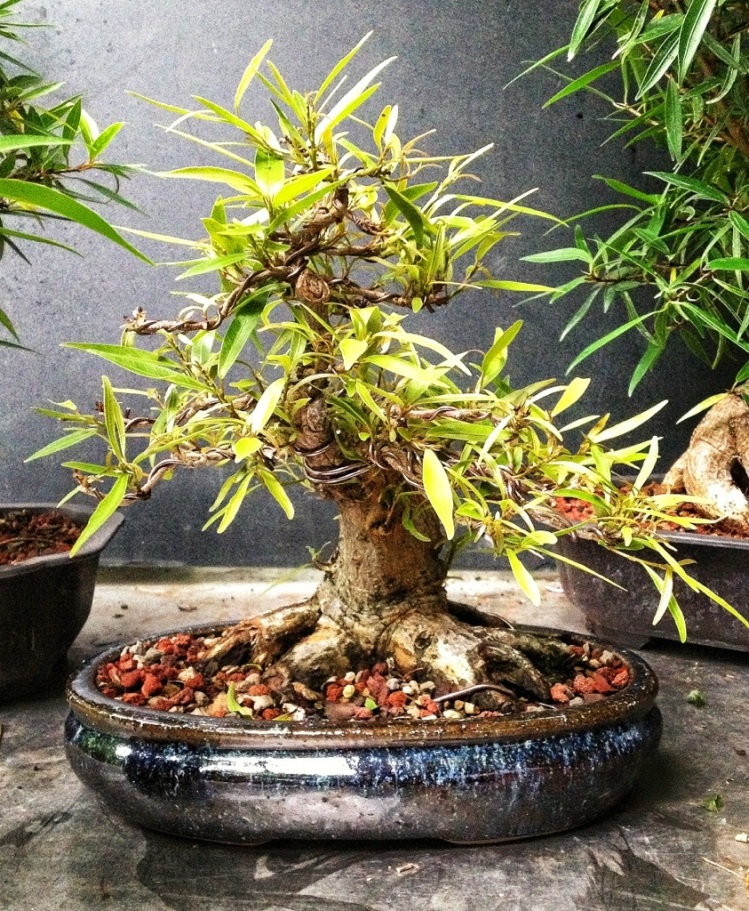
Which looked like this

A month ago (again, in this post)
The maintenance required on this one is to remove the copious and excessive budding.
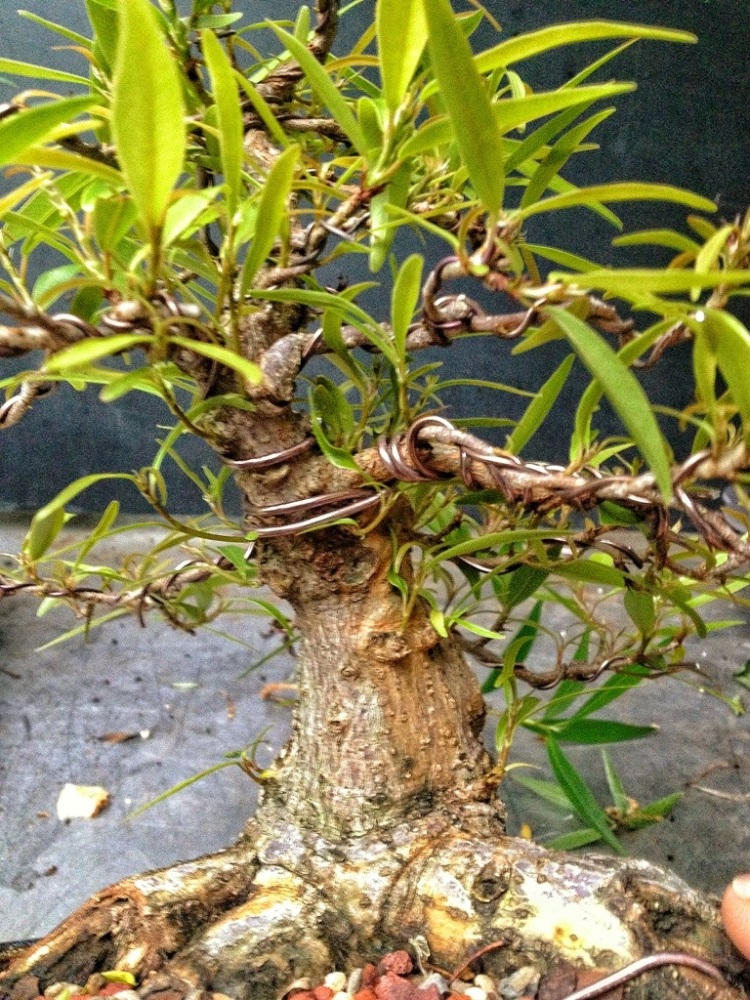
Everywhere on the trunk and any buds growing up or down on the branches should be rubbed off.
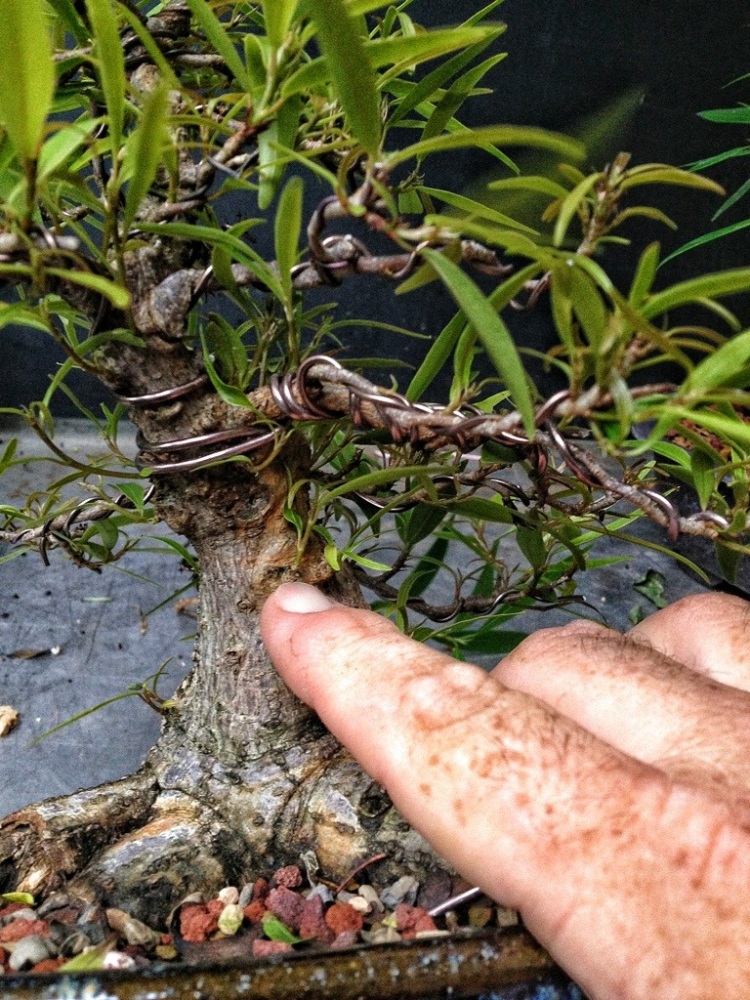
And then a topiary trim
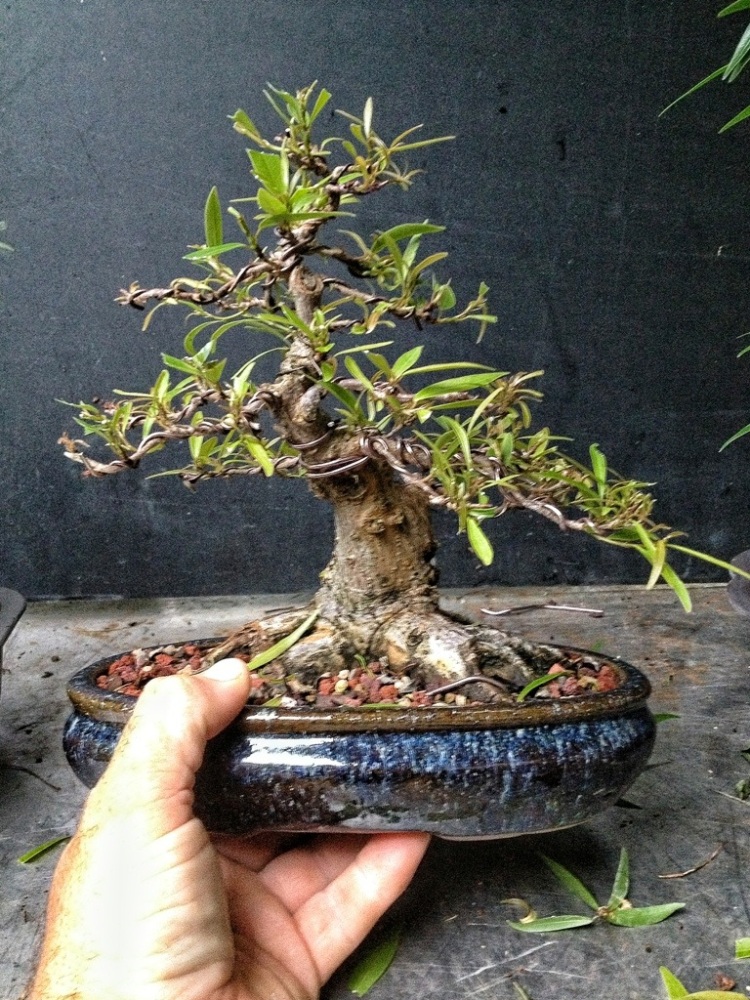
Next tree was one I allowed to grow tall before chopping it
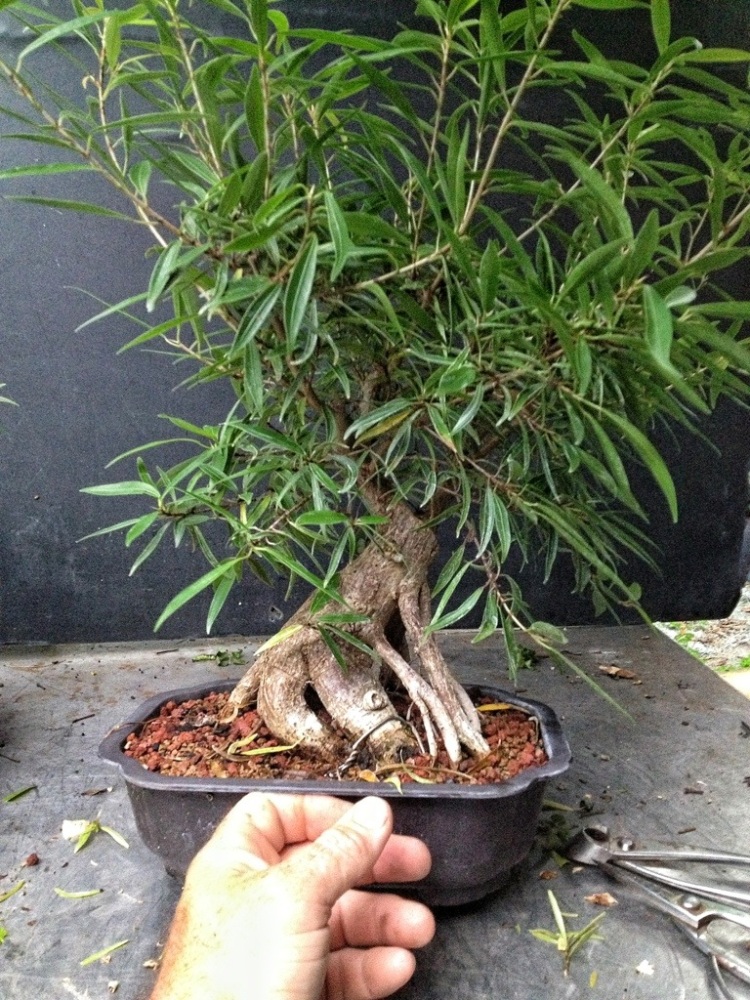
I’m not going to do anything to it today but last year I chopped it like so

It’s a growing year: I’d like the aerial roots to fill in
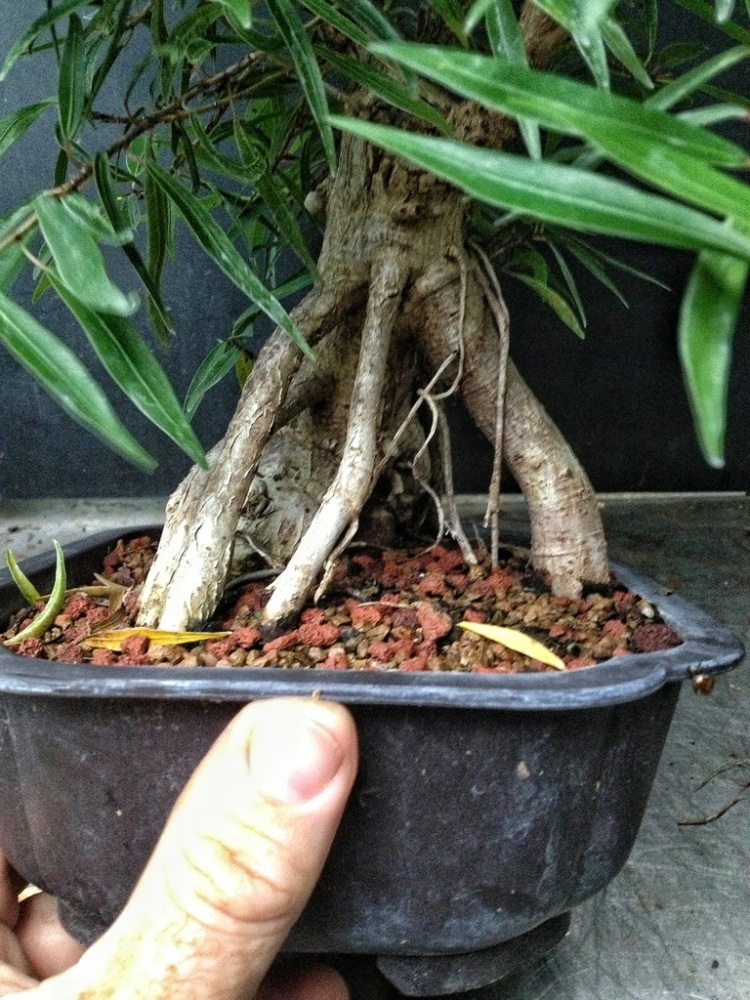
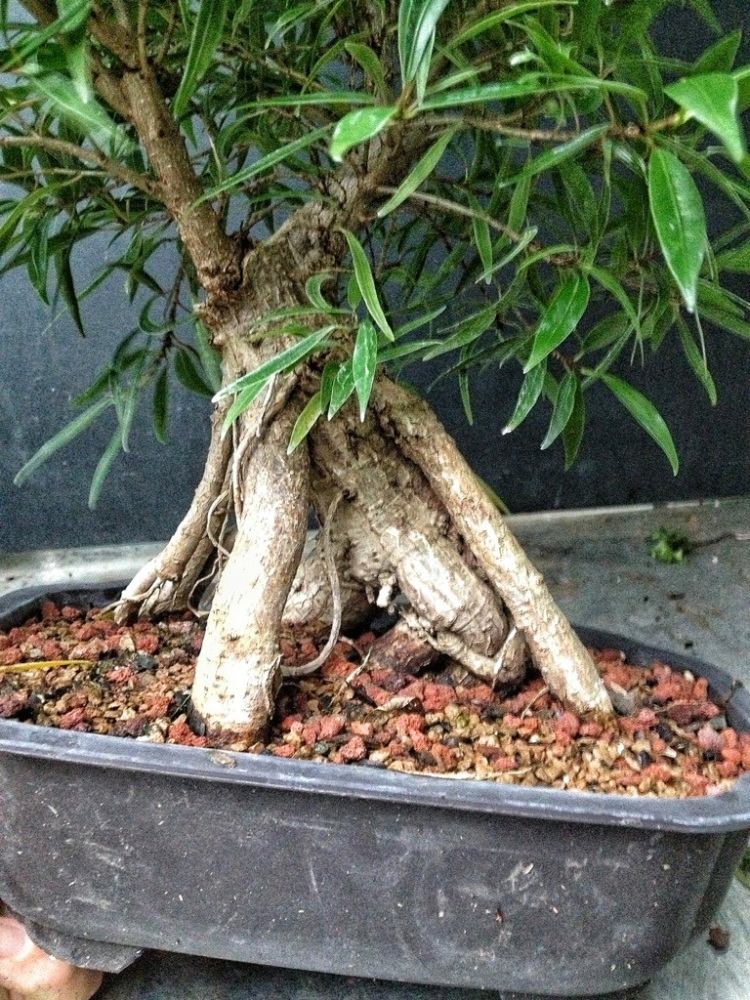
What’s interesting is how they all have different growth habits. The first two have no aerial roots and this one is full of them.
Which brings us to the next tree. It’s one I’ve been performing some serious surgery on because its just so damned recalcitrant.
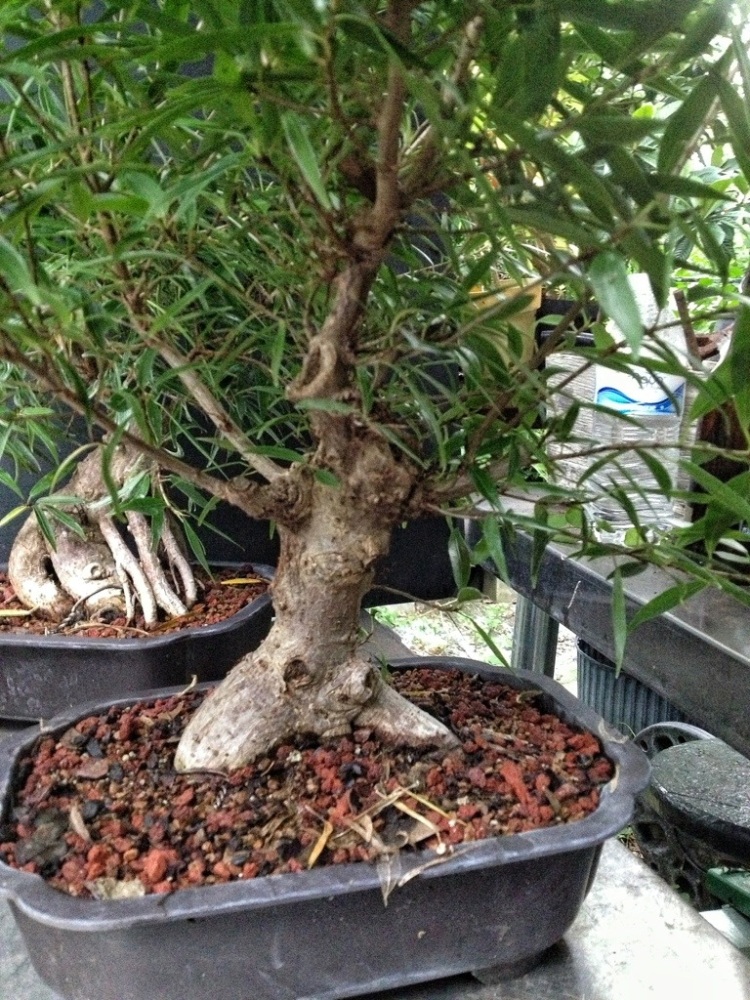
it needs more surgery today.
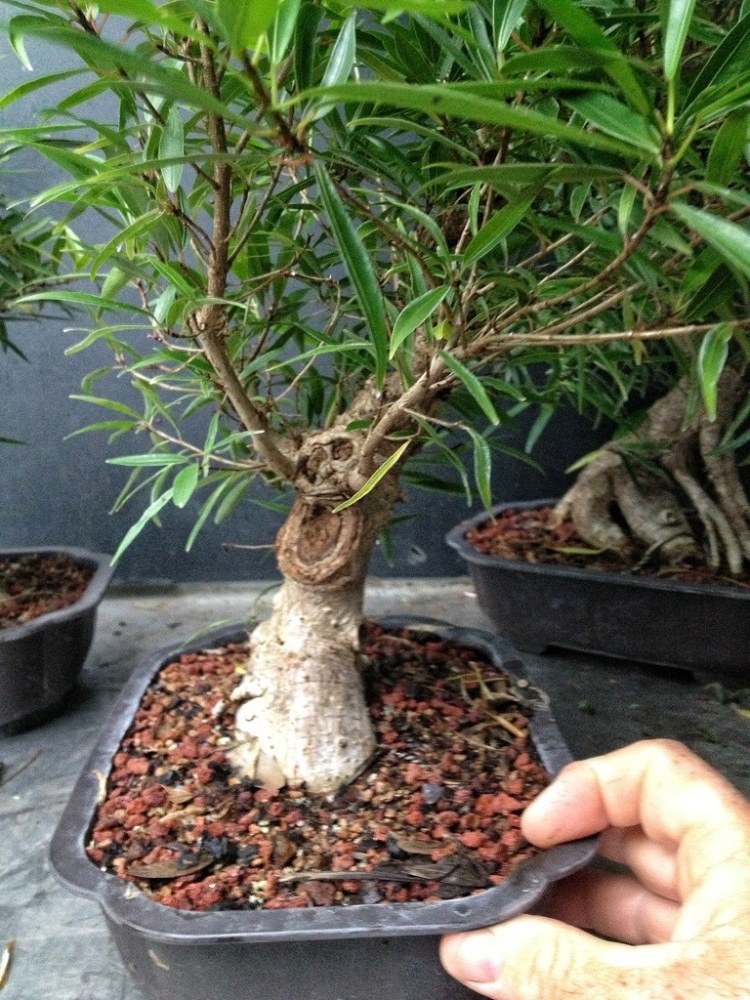
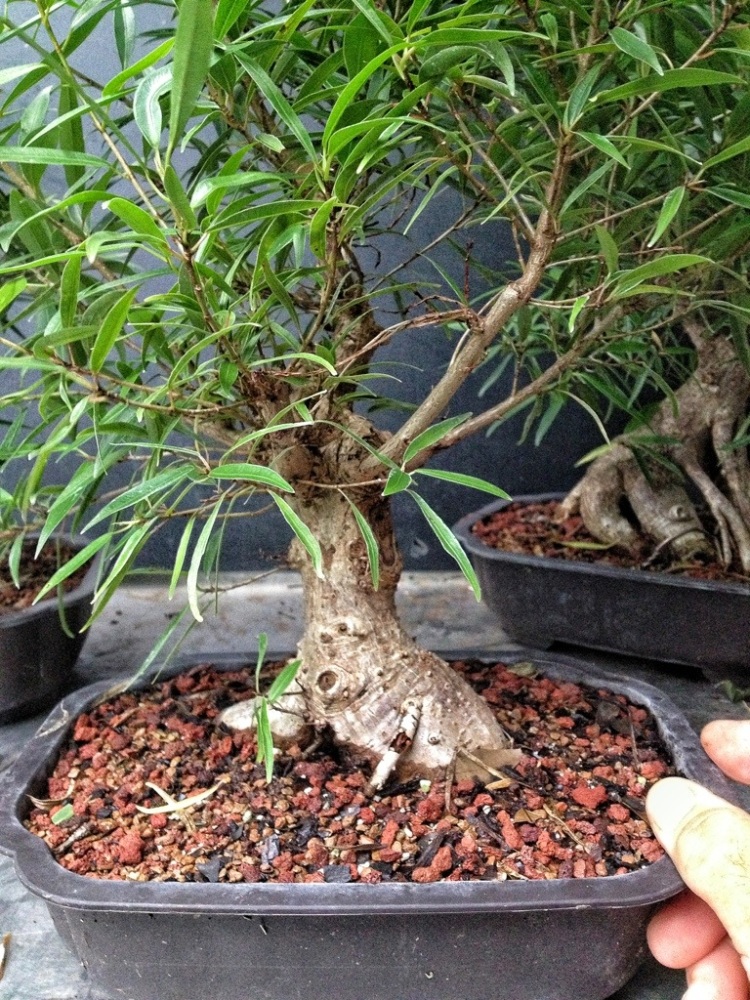
It’s growing
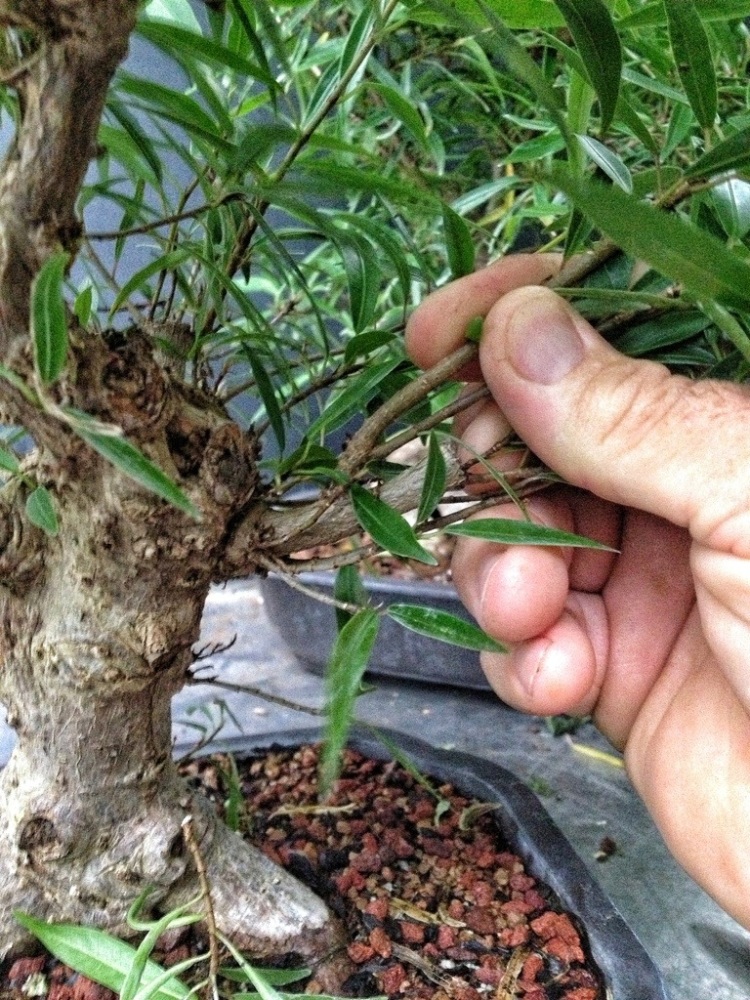
Just not where I want it too. It keeps putting growth out where I’ve pruned it off
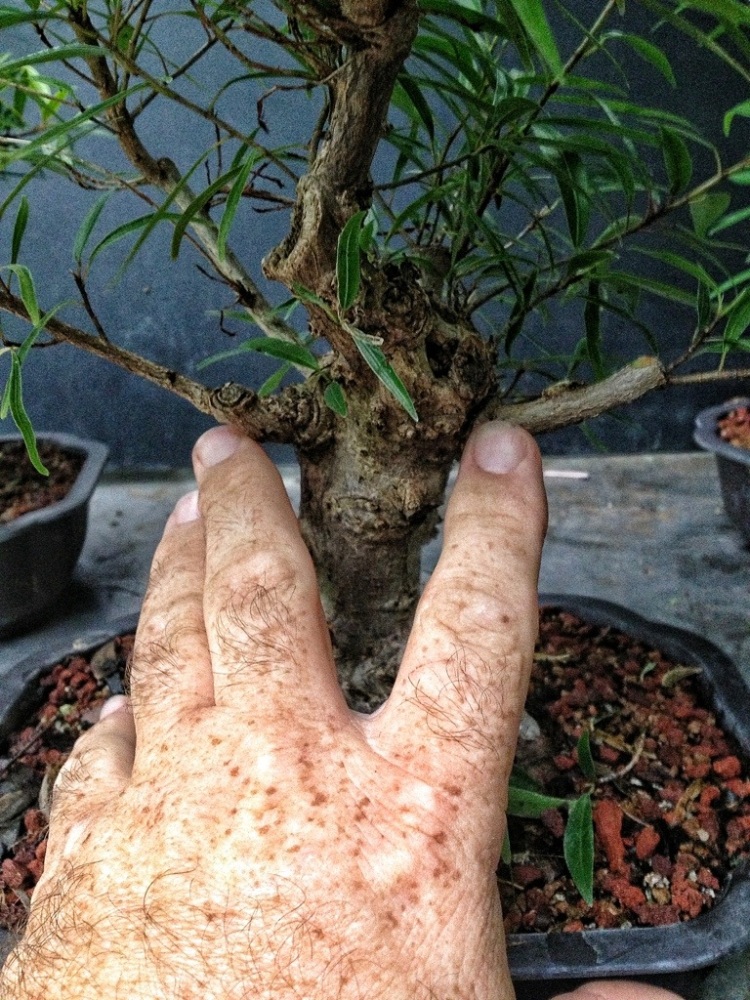
And it has some reverse taper too because of it.
I should just trunk chop it.
Let’s try this first.
Snip

Snip

Shave


Stub
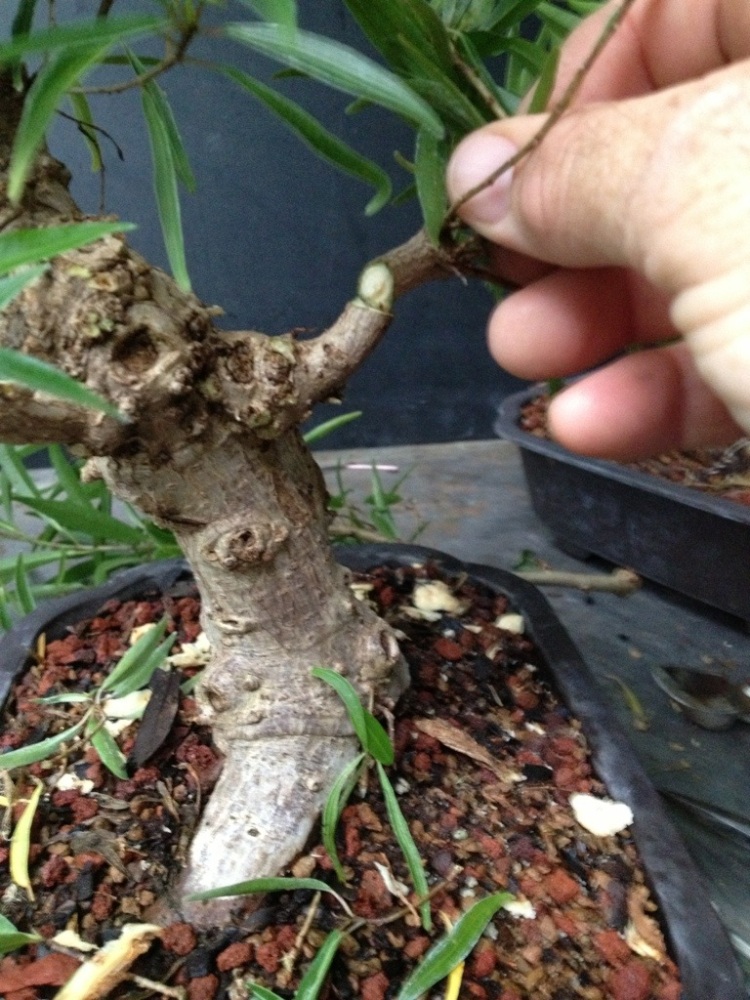
Chop

And…..
damn that’s ugly-
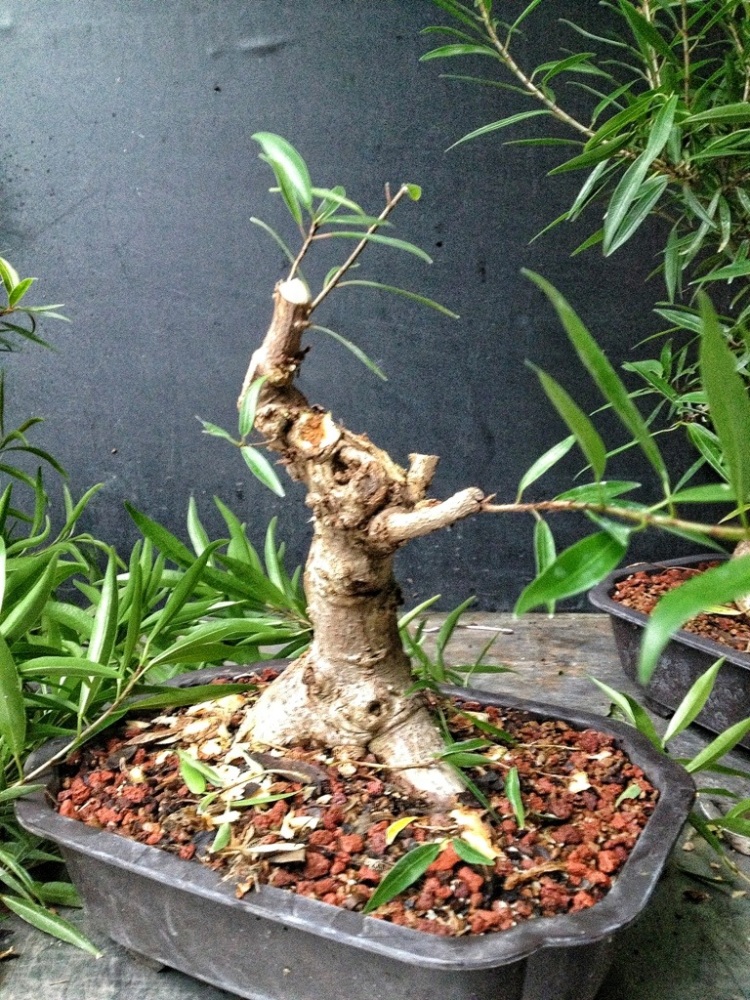
Sometimes the ugliest trees are the most beautiful.
We shall see.
The next tree is a little further along
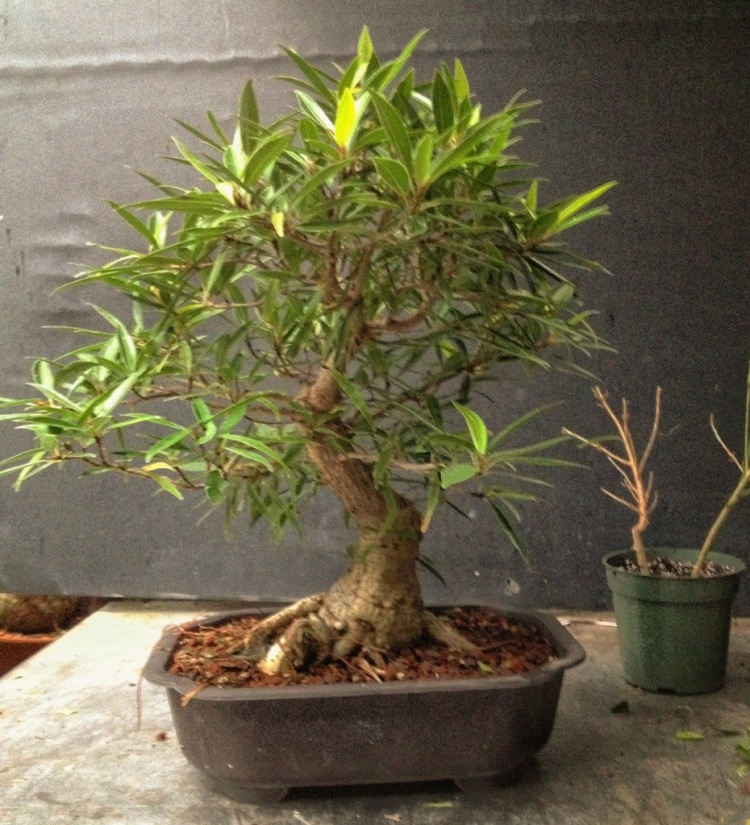
It has great movement and a big base
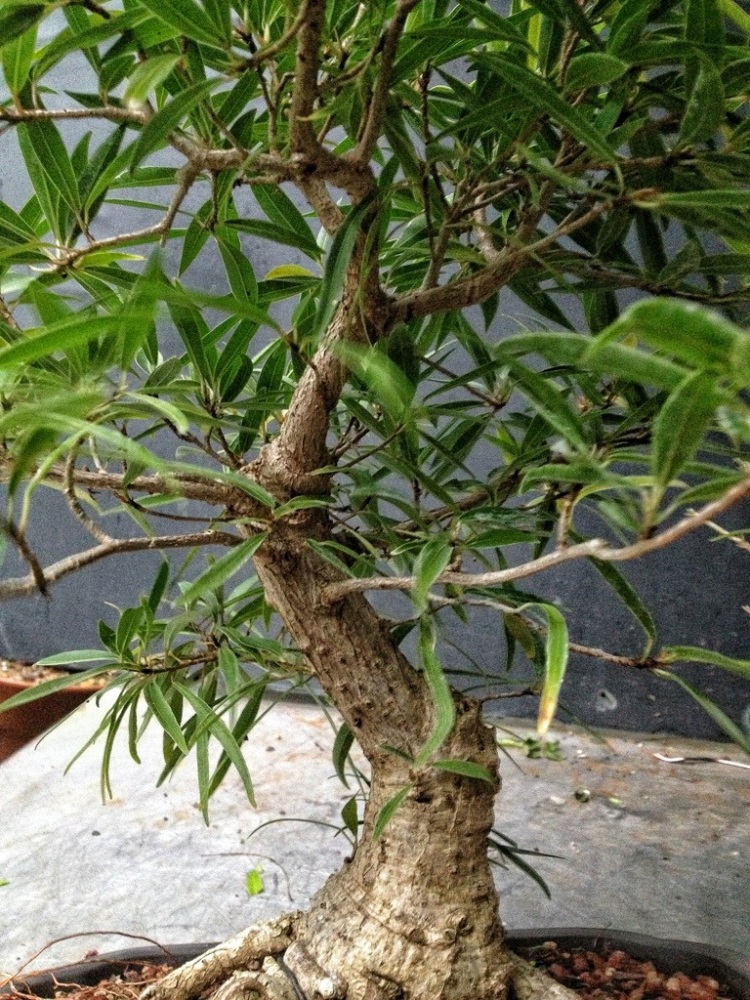
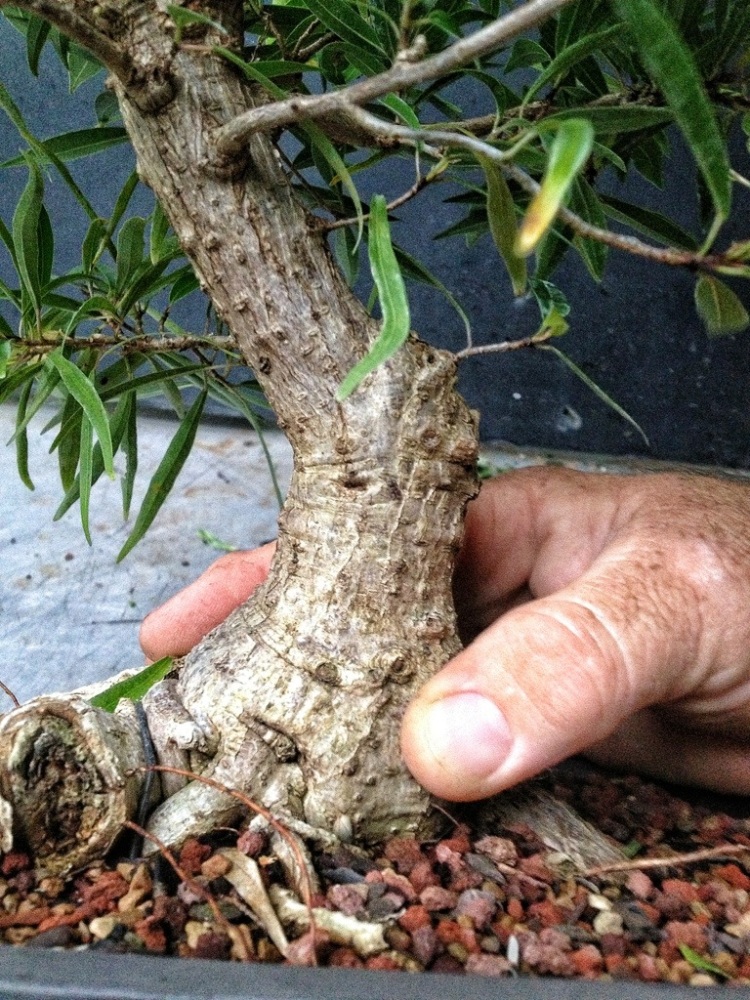
Whoever grew this really knew his stuff…….wait a minute…what’s that tapping sound?
Oh! It’s me patting myself on the back.
I should be careful, I might just dislocate my shoulder….
I wired this once last spring and I unwired it in the fall of last year I believe.
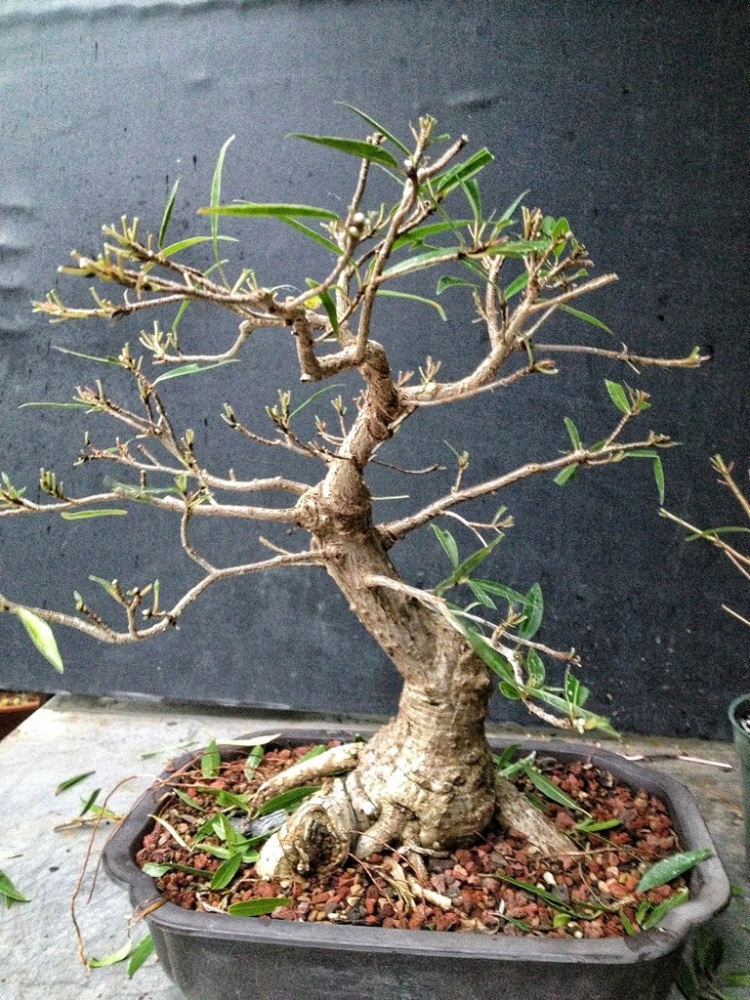
When I wired it I had bent the top into a side branch to fill the space.

But the structure is a little funny now and the tree is a little too tall. If I let it develop now it will be way too tall
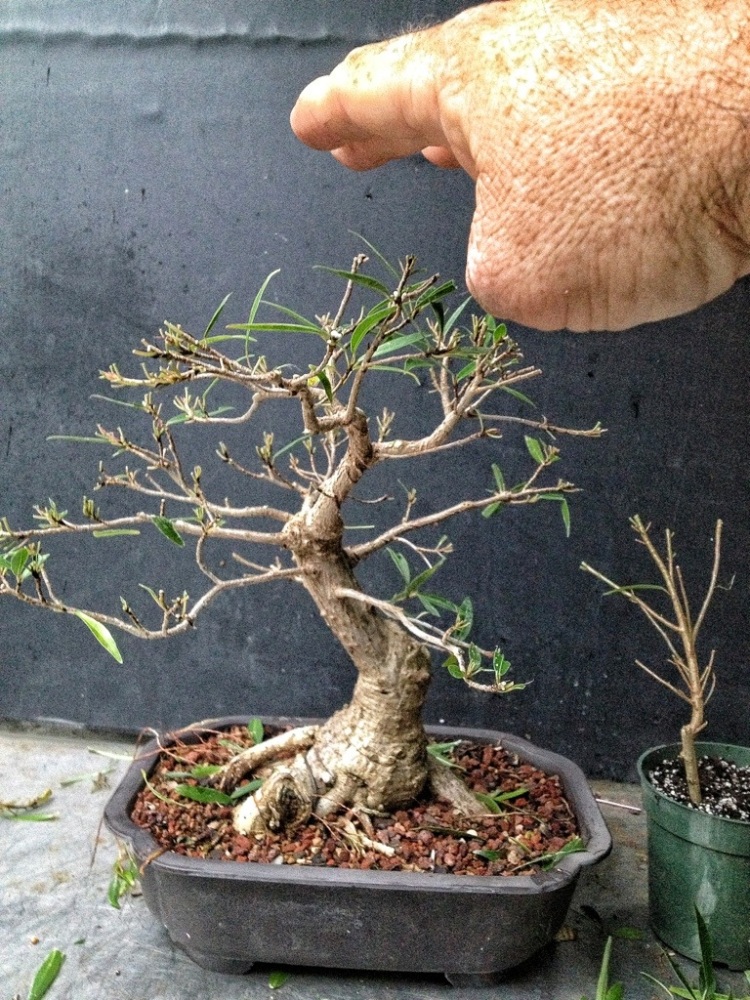
It needs to be, total height, where the branch tips are now.
That means cutting it back again.
Don’t be afraid to cut back and regrow the crown ( it’s not a problem on most trees, but there are exceptions). A ficus will grow the top back quick.
So….


What this will also do is force some back budding.
Especially here:
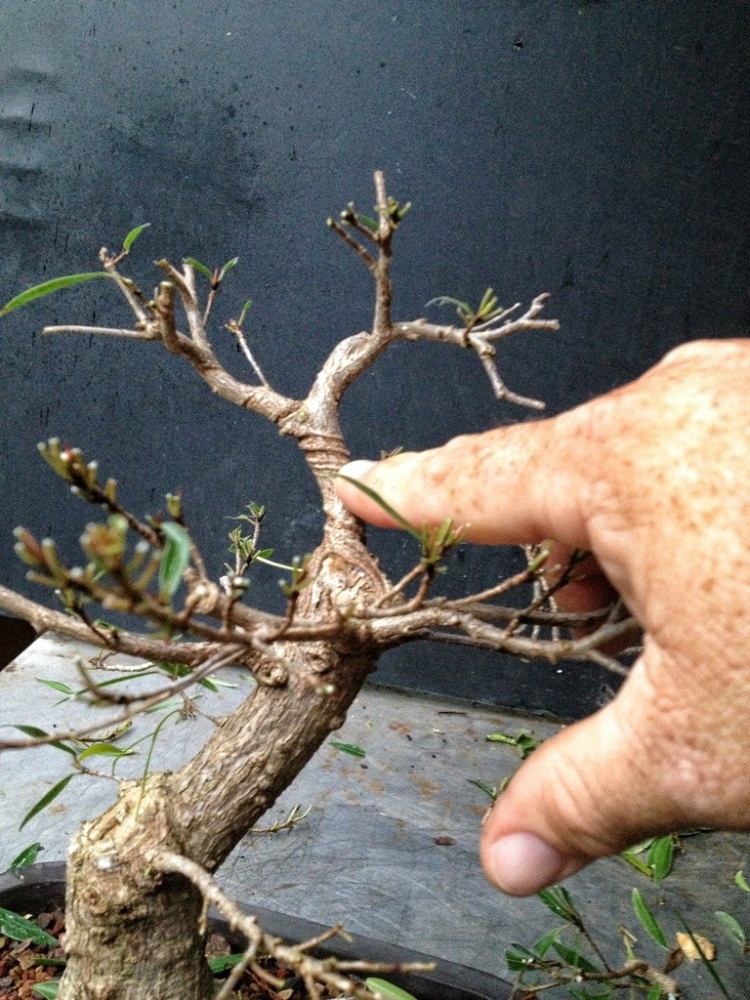
Some root work (I don’t need to repot, this training pot is big enough for the tree)
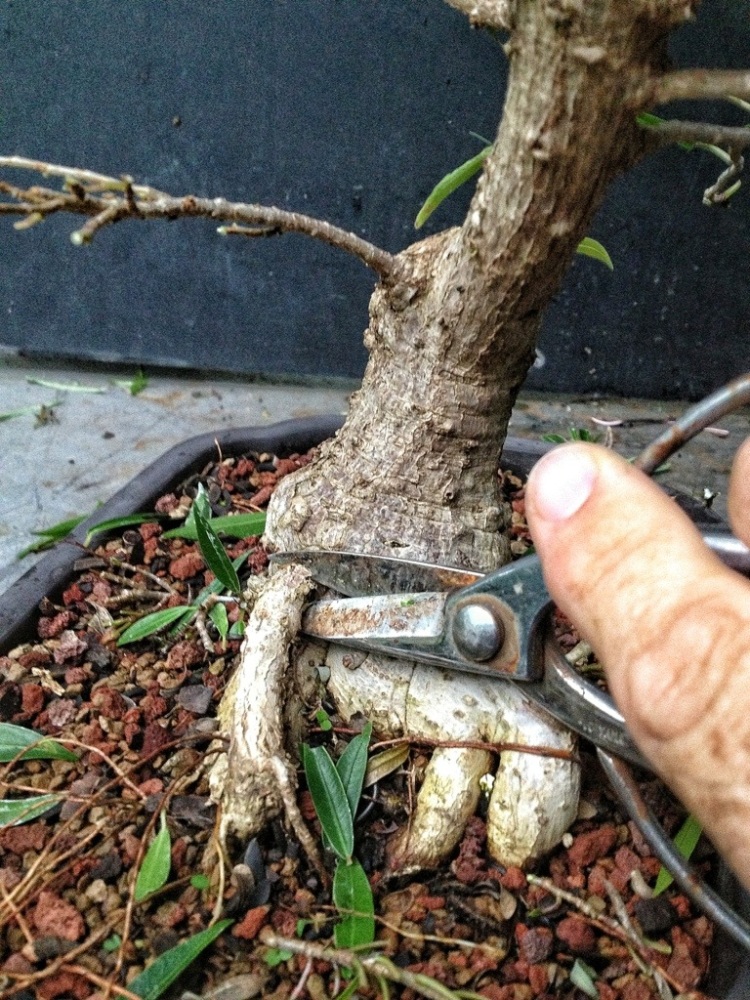

And I’ll leave it at that……
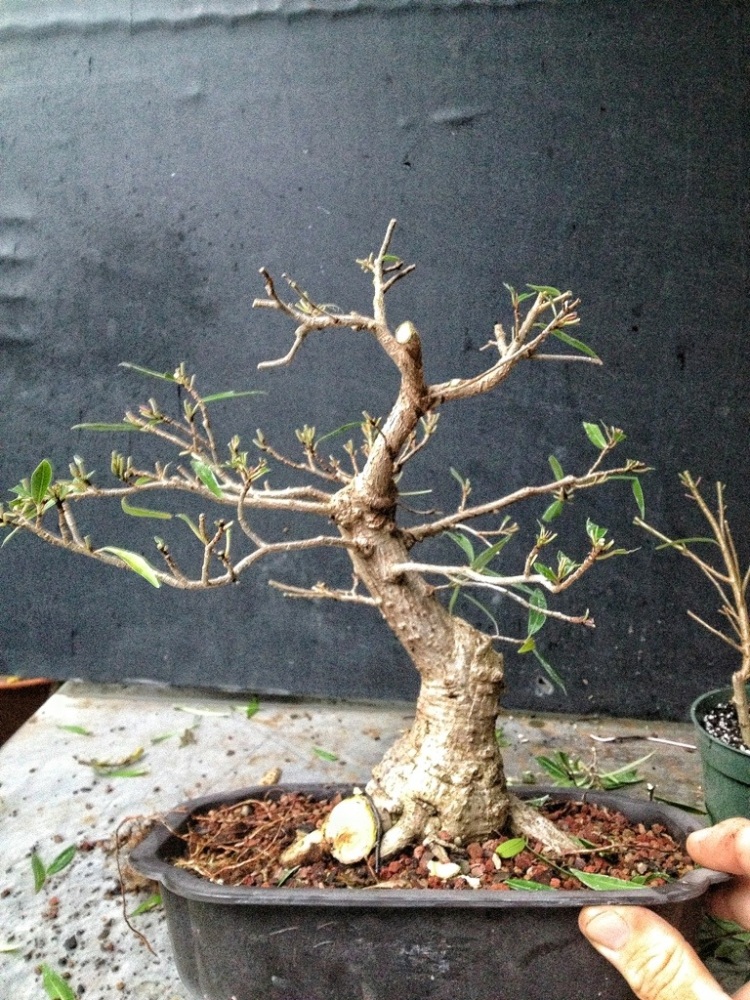
After all these trees you’re still wondering how I got those sticks to grow, right?
Let me use one more tree as an example
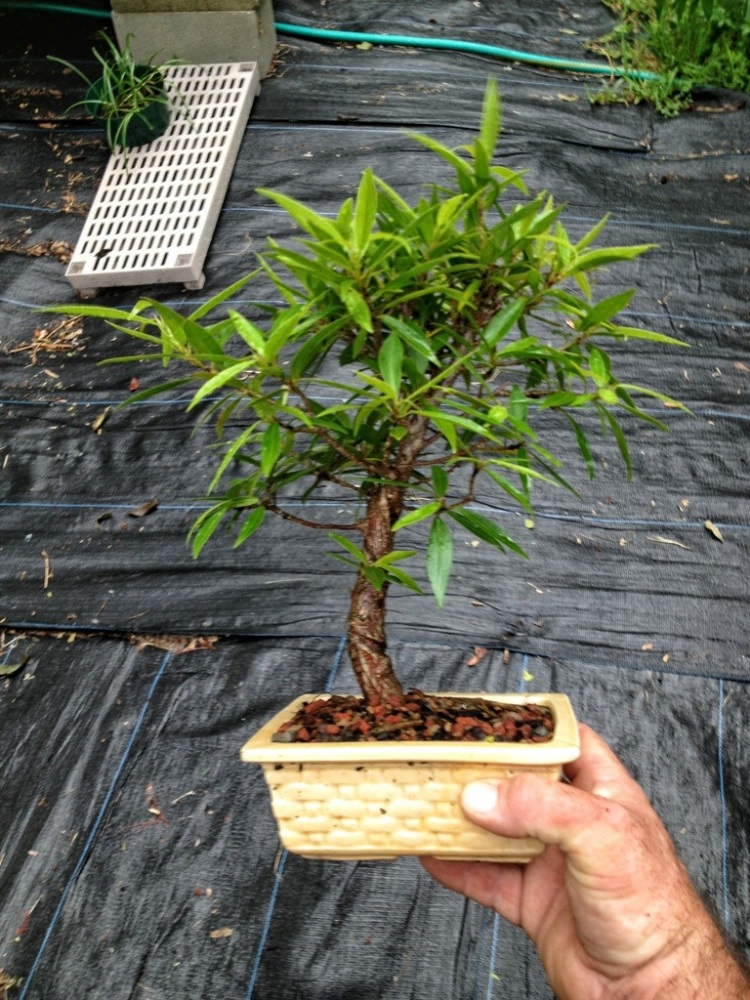
I was asked about 4 years ago to give a demonstration and run a workshop for an ikebana club.
The pricing model they used was odd so I needed to have trees that weren’t more than $10.
I had cuttings that I used and some cheap pots so I made it work.
This tree was left over and has, therefore, been in this pot for four years. If you compare it to the last tree
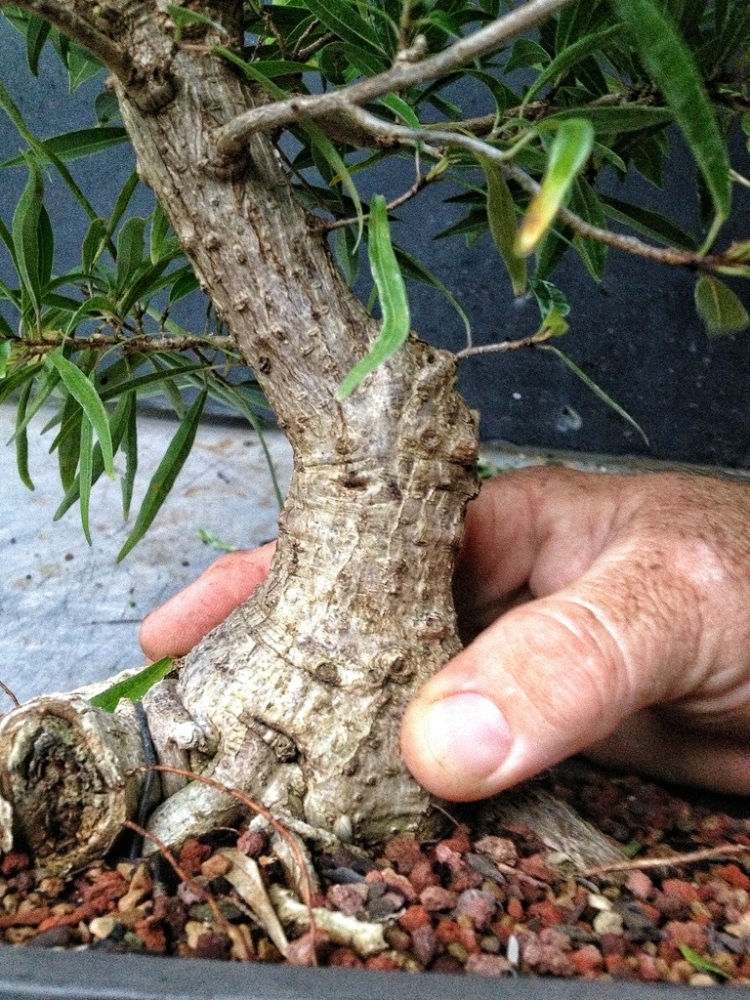
which is about eight years old, it should be at least half the size, right?
It’s about a quarter the calliper, and it hasn’t really grown at all.
How do you grow it?
Here you go then:
Start with a six inch pot in good draining soil. Let it grow uninterrupted for a year. Move it to a gallon pot. Half full of soil. Grow half a year then cut it back. Grow until next year. Put it in a 3 gallon pot. Half full. Grow for a year.
This process will grow the tree tall and consequentially, fat.
The half full pot causes the tree to want to push up above the pot rim quicker and also the humidity and darkness will encourage aerial roots. The relatively shallow soil mass also encourages the root base to spread. It’s this process over and over. Year by year.
Not very exciting but it works.
But it’s not really training bonsai.
My advice to the novices out there. Get several trees to work on; one to develop as a bonsai, one to grow out and one that’s near completion. This way you have all the levels of development and your bonsai education will be a rounded one.
So now you’re wondering, how could I just leave this tree unwired?
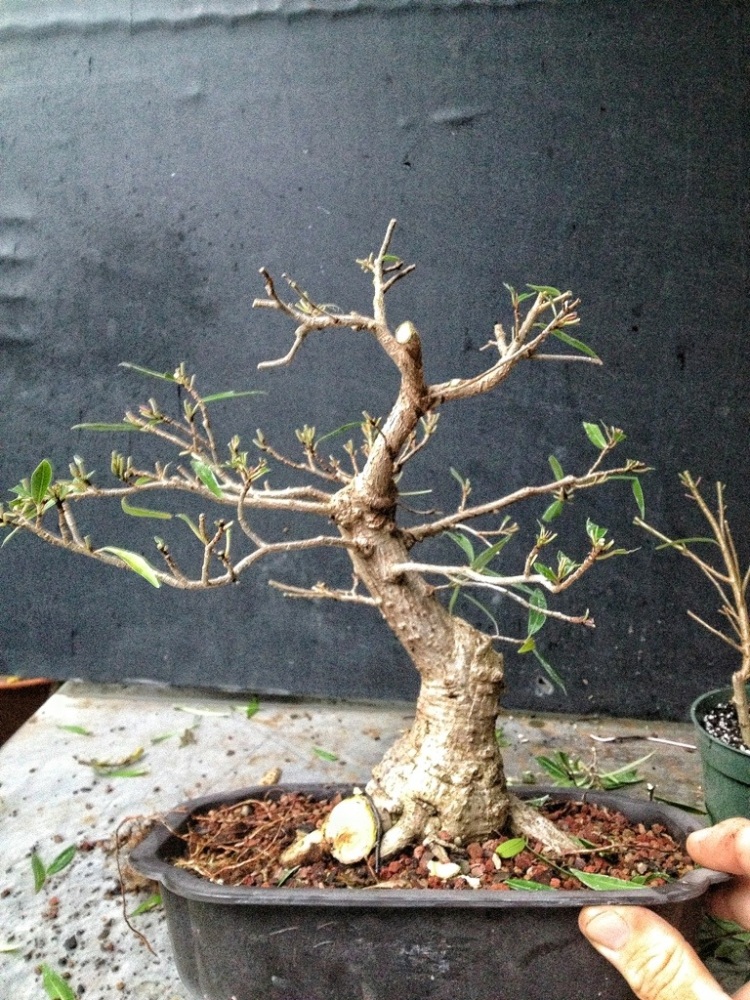
Right?
I can’t.
I am, as you may know already, a wiring junkie.
If I wire one branch I have to wire them all.
I tried to resist but the tree needs wire.
Doesn’t it?
I hear a resounding yes from you all, my facilitators.
Here you go….
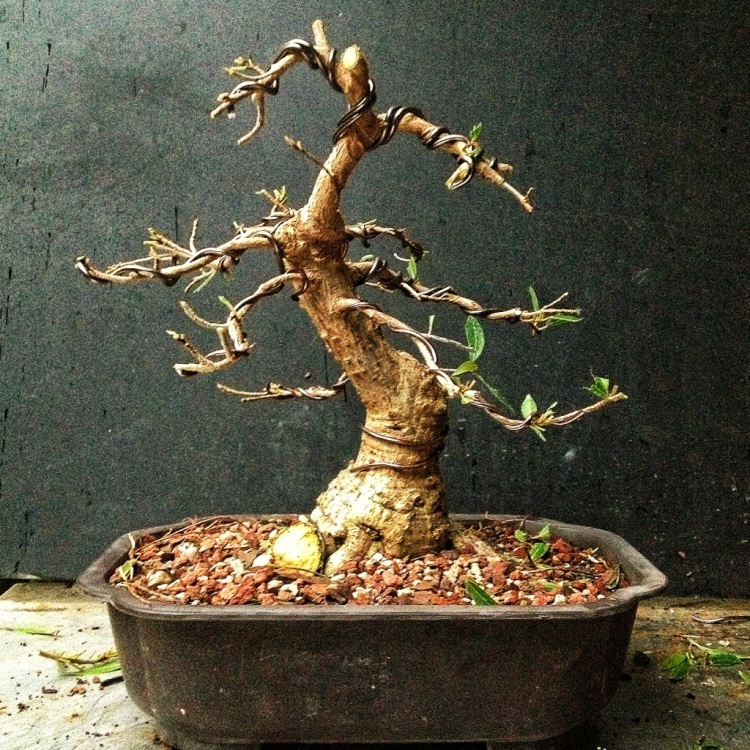
Better?
Yes, I do feel better. Thanks for asking.
Great stuff as usual. Your advice to use a nursery container but only fill it halfway to help with aerial roots is genius. When you up-pot into the next size container how much do you work the roots? Do you just slip pot it, do a full root pruning, or just comb them out and work them into the fresh soil?
LikeLike
Thanks Charles.
I comb out the roots, remove those that offend me and those at the bottom middle of the root ball (to encourage the radial roots to grow) but I do not trim the other roots. And it’s best to freshen the soil too, new soil drains faster.
LikeLike
Reblogged this on Indiana Bonsai.
LikeLike
Little late to the game here, but this is exactly the info I was looking for when I first started asking questions here, so thanks! And thanks for giving me hope that it can be done! My little fukien tea tree is doing well, flowering and making berries like mad in the 6″ pot, nice deep green leaves.
I’ve also got some cuttings going from the pruning of the fruit trees, trying a few different methods to root them out. The stick it in soil and hope method didn’t work out too well for anything, really. I’ve got a couple of mulberry cuttings that are still clinging to life from that method but everything else is dead dead dead. No real cost there other than I would have liked to have the trees.
The other method is rooting in water and rooting hormone, I’ve got several working on that method now, some mulberry, some known to be pear, and a couple of mystery trees… they’re in the batch of fruit trees but we don’t know which is which or if it’s all root stock or not. Still, it’s all experience and trees, though I’m probably still going to wind up buying a more developed tree to work on, I’m really enjoying the process of figuring out what is going to work best in our area, and even though I’m disappointed when something doesn’t work, it isn’t costing me a ton of money to play and learn.
LikeLike
As long as you’re learning and having fun that’s all that matters.
LikeLike
I am. I even laugh at myself though, inspecting the cuttings through the jar to try and spot the slightest sign of rooting. Lots of reasons I want to “Clone” these trees in particular instead of just buying trained fruit trees… a lot of it has to do with heritage. My great grandparents planted these trees, there are stories about one of dad’s horses rearing up to reach the high pears on one of them. I climbed a couple of the mulberry trees as a kid to pick berries and get all sticky.
And that’s totally aside from the awesomeness that is beautiful little potted trees to start with.
LikeLike
I love your posts, and I love how you write. I started a blog…he he he! I am going to reblog all this good info!
LikeLike
Thanks! Feel free
LikeLike
It is hard to chose. All your posts are just too nice! Thanks! Here is my blog. Any advise is welcome. I made it last week, and it is my first…so not sure if I made mistakes. Thank you for the advise you gave me before. You are so kind.
http://nelibonsai.wordpress.com/2013/07/28/airlayering/
LikeLike
Reblogged this on Bonsai advice.
LikeLike